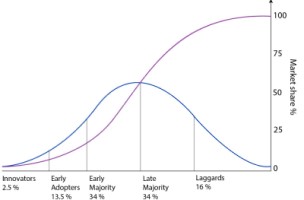Artificial Intelligence (AI) integration into systems in the Public Sector is transformative in nature in spite of the challenges perceived. The World Economic Forum1 in 2018 had predicted that approximately a quarter of the global GDP would be from AI technologies. But with the onset of Covid 19 pandemic, the pace of AI adoption has in fact increased in many countries. Singapore is already using AI in the sectors of transport and logistics, urban planning and development, healthcare, education, safety and security. USA, UK and Canada are topping the AI Integration ranking index with China not far behind investing heavily into implementation of system wide AI.
Quick and Informed decision making, automation of repetitive tasks, analytics of high volume and complex data are some benefits associated with adoption of Artificial Intelligence. The main challenge of adopting AI is the general ambiguity related to its integration and shortness of conception timeline. Privacy also a major concern raised by many citizens rights groups.
The problem solving capability and the predicting power of Data Science can still mitigate many public sector bottlenecks and issues if incorporated keeping in mind the bias and vulnerabilities. Now how do we know if AI is the best bet for a particular problem?
AI is well suited for spaces where a large volume of data is available and complex decision making is involved.
AI Use Cases In Public Sector
- Weather Forecasting
- Predictive Traffic Congestion
- Iris Recognition for Immigration and Criminal Records
- Optimizing Imagery in Medical and Defense Sectors
- Transportation Industry
- Telecommunication
- Agriculture Industry
For example, in the travel industry, by passenger mapping using available historical data, passengers can have a seamless user experience if vehicular travel routes can be mapped in line with the predicted demand curve. It will also reduce overhead expenses.
Another example is caller rerouting. Using NLP, calls can be routed reducing response time and improving efficiency of the system workflow.
The main components of AI adoptions in the public domain are Problem Definition, Data Handling, Insights Gained and Governance Using these Recommendations. Relevant knowledge in the field is essential to understand the output of an algorithm model and correlate it to the actual scenario.
AI Adoption Types

Early Adopters of Artificial Intelligence like the USA have the advantage of learning from the derived data and outcome and improve on their patrons’ user experience.
Even now, the Early Majority like Singapore, Canada, UK, China, UAE, New Zealand will find it easier to take off in the S-Curve for gaining momentum on their technology assisted governance journey to better economic growth.
India ranks 19 in the global scale, coming right behind Hong Kong in the Asia Pac region.
Late Adopters and laggards in the adoption pattern hesitate to bridge the gap unsure of the business case for AI, overheads or fearing the ROI. Talking to an industry expert will help in the decision making process. Some naysayers use manpower replacement as a downside to AI adoption.
McKinsey spokesperson2 says “In our experience, AI and machine learning are most valuable when used to support, and not substitute for, human decision making—and to enable the same humans to understand the rationale behind the algorithm’s recommendations.”
The one advantage that the public sector has is the large volume of historical data lying around that can be tapped into for training the model and the tax paying citizens reaping the benefit real time from it.
For late adopters and laggards, the main disadvantage will be the process that AI is itself. While the early adopters and the early majority will be able to reconfigure their algorithm models to reread more intuitive knowledge from the insights already gained, the laggards will be in a constant catch up mode.
AI integration does not provide a 'plug and go’ kind of solution but requires a tactical and pragmatic approach to problem solving using machine learning and applying those insights. In a significant survey of early leaders in cognitive solutions by Deloitte, 80% of respondents are able to see some percentage of turn around in their work using innovative technologies like AI.
References
- Klaus Schwab, The Global Competitiveness Report, PDF, 16 October 2018, https://www.weforum.org/reports/the-global-competitveness-report-2018, accessed August 2021
- Anusha Dhasarathy, Sahil Jain and Naufal Khan, When governments turn to AI: Algorithms, trade-offs, and trust, Article, 19 October 2020, https://www.mckinsey.com/industries/public-and-social-sector/our-insights/when-governments-turn-to-ai-algorithms-trade-offs-and-trust, accessed August 2021






Comments